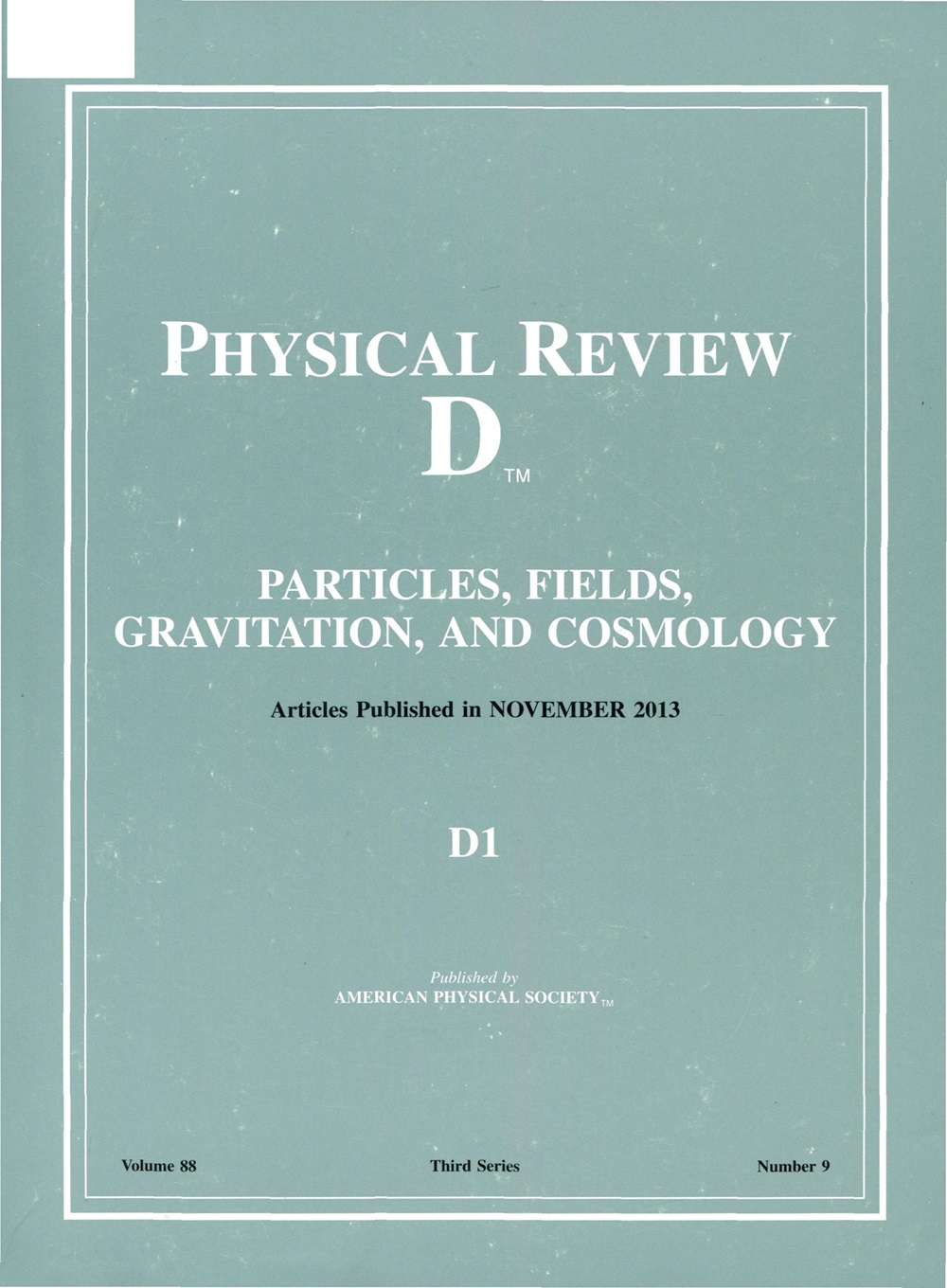Logarithmic correction to the entropy of a Kerr-Newman family of black holes in U(1)2 -charged STU supergravity models
IF 5
2区 物理与天体物理
Q1 Physics and Astronomy
引用次数: 0
Abstract
The leading quantum-gravitational correction to the black hole entropy is known to be a universal logarithmic term. In this study, we investigate the logarithmic corrections for the black holes in the STU supergravity models, which are a bosonic truncation into a specific class of U(1)2-charged Einstein-Maxwell-dilaton theory. We demonstrate how the entire Kerr-Newman-AdS and Kerr-Newman family of black holes can be recovered within the gauged and ungauged STU supergravity models as special embedding choices in 4D. Logarithmic corrections are computed using two distinct Euclidean quantum gravity setups for extremal and nonextremal limits of all embedded rotating, static, charged, and neutral black holes. Our calculations employ the on-shell heat kernel method based Seeley-DeWitt expansion computations. Notably, all the求助全文
约1分钟内获得全文
求助全文
来源期刊

Physical Review D
物理-天文与天体物理
CiteScore
9.20
自引率
36.00%
发文量
0
审稿时长
2 months
期刊介绍:
Physical Review D (PRD) is a leading journal in elementary particle physics, field theory, gravitation, and cosmology and is one of the top-cited journals in high-energy physics.
PRD covers experimental and theoretical results in all aspects of particle physics, field theory, gravitation and cosmology, including:
Particle physics experiments,
Electroweak interactions,
Strong interactions,
Lattice field theories, lattice QCD,
Beyond the standard model physics,
Phenomenological aspects of field theory, general methods,
Gravity, cosmology, cosmic rays,
Astrophysics and astroparticle physics,
General relativity,
Formal aspects of field theory, field theory in curved space,
String theory, quantum gravity, gauge/gravity duality.
 求助内容:
求助内容: 应助结果提醒方式:
应助结果提醒方式:


